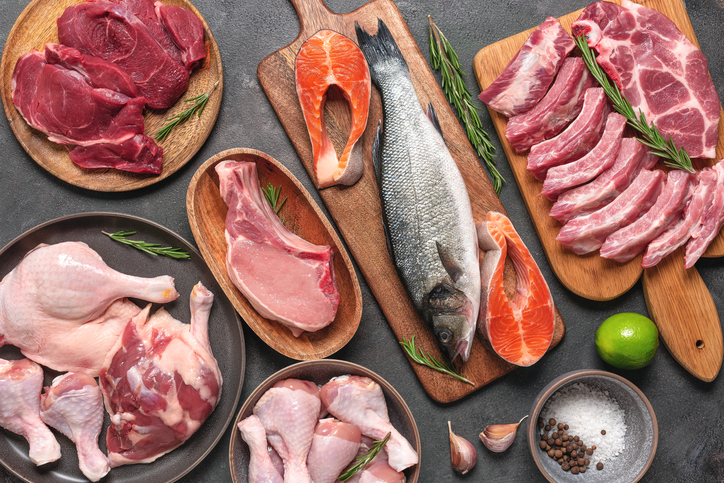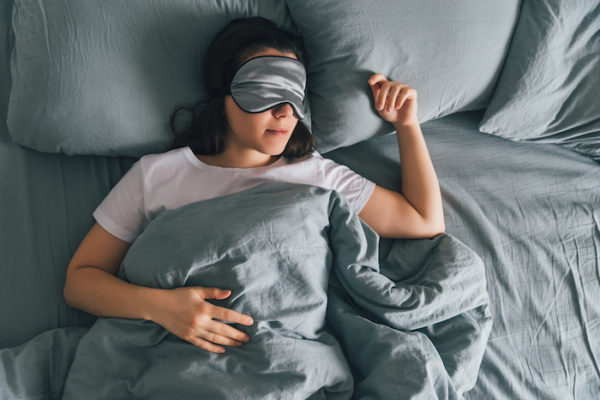If you watch TV, read the news, scroll TikTok, or consume any kind of media at all, you’ve at least heard of Ozempic and other semaglutide medications like Wegovy and Rybelsus, as well as similar tirzepatide drugs like Mounjaro and Zepbound. These prescription medications were initially developed to treat type 2 diabetes but have since gained notoriety for a common, often welcome, side effect: weight loss.
Semaglutide and tirzepatide work by mimicking the GLP-1 (glucagon-like peptide-1) hormone, explains Dr. Rekha Kumar, chief medical officer of Found and former medical director of the American Board of Obesity Medicine.
“GLP-1 is an incretin hormone that lowers blood sugar, delays stomach emptying, and signals fullness to the brain,” she explains. When prescribed by a doctor, incretin mimetic drugs can help treat obesity and potentially lower patient risk for other health conditions, like cardiovascular disease.
For many people who are overweight or contend with diabetes, these medications have been game-changing. But they’re not a miracle cure for all health concerns. (Taking them won’t, for example, bolster bone health or expand your aerobic capacity.)
There also is the potential for unwanted side effects. From minor gastrointestinal discomfort to more concerning issues with long-term implications, there are a lot of considerations to weigh before taking medications like Ozempic, muscle loss being chief among them.
Lean mass loss is associated with deficits in physical strength and function, a resultant risk of injury, and a slower metabolic rate. Find out the likelihood, among other rapid weight loss effects, of muscle loss on Ozempic.
Does Ozempic Cause Muscle Loss?
Clinical trials show that people who take incretin mimetic drugs typically lose muscle mass. But sarcopenia (loss of muscle mass and strength) isn’t unique to weight loss drugs.
“When someone loses weight — whether through diet, exercise, weight-loss surgery, or medicine — one-quarter to one-third of that lost weight is typically muscle,” Kumar explains.
What makes weight loss on semaglutide and tirzepatide different, however, is the rate at which it disappears. “GLP-1 medications can result in greater, more rapid weight loss compared to other interventions, putting people at risk of even more muscle mass loss,” Kumar says.
A research review published in Endocrinology and Metabolism looked at more than 40 research studies that reported body composition changes among participants who used incretin mimetics. The authors found that, in most circumstances, recorded weight loss was predominantly due to reduced fat mass. But, in nearly two-thirds of the studies, between 20 and 50 percent of the total weight shed could be attributed to the loss of lean mass, a.k.a. muscle.
The dangers of muscle wasting
A rapid decline in lean body mass is concerning for many reasons.
Losing weight without focusing on muscle preservation can contribute to health issues, including a heightened risk of chronic disease, a slowed metabolism, and reduced bone density, Kumar says.
You may also lose the ability to perform everyday tasks (try carrying groceries or lugging a suitcase through an airport without core and upper-body strength) and notice a decline in your balance and posture. And considering age-related sarcopenia naturally begins after age 30, any drastic weight loss may compound existing issues and make it harder to recoup muscle as you get older.
“Unfortunately, it’s becoming more and more common for people to get access to medication but not to the comprehensive care that would warn you of these potential side effects, which is why it’s critical for people looking to lose weight to seek out holistic, evidence-based care,” Kumar says. “Without the right information and care, people experiencing weight loss with medication can also lose muscle and decrease their cardio-metabolic fitness in the process.”
Strategies to Prevent Muscle Loss on Ozempic
Incretin mimetic drugs must be administered under the care of a doctor, and they should be part of a customized health plan, as every individual’s experience, goals, and needs are different. However, some universal strategies can help prevent tirzepatide and semaglutide muscle loss.
1. Prioritize protein

Each macronutrient — carbohydrate, fat, and protein — is essential to any diet, but protein is especially critical for building and maintaining muscle mass. Your body needs an adequate amount of protein for muscle protein synthesis, the process by which amino acids (the building blocks of protein) turn into muscle protein.
The recommended daily allowance (RDA) for protein is .8 grams per kilogram of body weight for most adults, but depending your level of physical activity, you may need even more.
2. Work resistance training into your routine
“Strength training can help to prevent muscle mass loss, protect bones, and improve body composition and metabolic health for people experiencing rapid weight loss,” Kumar says.
Lifting, whether you’re using weights, bands, cables, or even your own body weight, causes micro-tearing within the muscles. When the body repairs that damage, the muscles are rebuilt bigger and stronger so they can handle more stress.
If you’re new to fitness or have always stuck to cardio workouts, starting a resistance-training routine can be a little confusing and sometimes intimidating. BODi offers a wide variety of strength and muscle-building programs for everyone, from weight room rookies to veteran lifters.
For four weeks of beginner-friendly workouts, check out Fire and Flow, or amp up the intensity with Sure Thing, which focuses on endurance and power-based strength training.
3. Fuel your workouts appropriately

Encouraging fat loss while preserving fat free mass (i.e. muscle) can be a tricky equation. You need enough of a caloric deficit to lose weight, but you also need to consume adequate calories to fuel your workouts (remember, calories = energy) and promote muscle protein synthesis.
For the same reasons GLP-1 agonists help reduce your appetite, they can also make it harder to supply your body with what it needs. A registered dietitian can evaluate your unique energy requirements and help you navigate the complexities of losing weight while building and maintaining muscle mass.
Optimizing Your Nutrition on GLP-1 Drugs
Kumar explains that while you may eat less when taking drugs like Ozempic, the goal is not to significantly restrict your food intake. “It’s to quiet the food noise and put you back in control of your diet,” she says.
If you do find yourself eating less, make sure you’re consuming high-quality, nutrient-dense foods to avoid malnutrition. For most people, this means doing the same things you would do for weight loss under any program or after bariatric surgery — avoid processed foods, reduce added sugar, and focus on whole foods and lean protein.
After cutting out extra snacks, treats, and oversized portions, you’ll still have plenty of opportunities to fuel your body with the nourishment it needs to function properly and help preserve muscle mass.
Consume high-potency foods

“Even if you have a reduced appetite, prioritize eating enough nutrient-dense foods, like protein-rich chicken, fish, or edamame, and fiber-rich options including fruits, vegetables, and beans,” Kumar says. “Drinking enough water is also crucial for keeping your digestive system operating smoothly.”
Time your eating
Factoring the timing of your meals and, more specifically, your macronutrient intake can also help you capitalize on your calories.
Glucose is your body’s preferred energy source, so eat meals and snacks containing carbohydrate-rich foods (e.g., oatmeal, whole grain bread, rice, fruit, and vegetables) before a workout. Focus on protein intake post-workout, as this period, known as the “anabolic window,” is when your muscles are most receptive to protein.
See an MD or dietitian

Also, if you’re struggling with maintaining a healthy diet, don’t be afraid to ask for help. “Some people using GLP-1 medications share that they don’t find the same level of joy from eating. To an extent, this is a natural part of adjusting your relationship with food. But if it feels problematic for you, talk to your healthcare provider,” Kumar says.
Supplementing to Help Preserve Muscle on GLP-1 Drugs
Supplements aren’t designed to replace whole foods. But they may help “fill in the gaps” of minor deficiencies in your diet, and offer nourishment when eating a traditional meal or snack is inconvenient or unappealing.
In particular, protein supplements may be useful for individuals who are concerned about Ozempic and muscle loss. “Some people experience difficulty meeting necessary protein requirements due to appetite suppression, so adding protein shakes and nutrient-dense bars can be helpful in maintaining a balanced diet,” Kumar says.
So, while you may not feel hungry for grilled chicken or salmon after a tough strength-training session, you may find beverages like Shakeology or Beachbody Performance Recover, which contain between 16 and 20 grams of protein per serving, easy to drink.
Other micronutrients (vitamins and minerals), like iron, vitamin D, vitamin B12, and calcium, are also critical to muscle growth and function.* However, it’s never a good idea to indiscriminately add supplements to your nutrition plan based on what you think you may need. A healthcare professional can conduct a thorough assessment and provide personalized supplementation recommendations.
Lifestyle Changes for Maintaining Muscle Mass on GLP-1 Drugs
You can have a buttoned-up diet and a consistent strength-training routine, but if you aren’t giving your body adequate time to rest and recover, you won’t stave off potential Ozempic muscle loss.
1. Emphasize rest

Sleep is critical to muscle maintenance and growth. One study published in Physiological Reports found that just one night of total sleep deprivation “induced anabolic [growth] resistance and a procatabolic [decay] environment.”
In other words, a single all-nighter hindered the process of muscle protein synthesis and promoted the breakdown of muscle tissue. Just imagine how badly consistently poor sleep can sabotage your strength gains.
2. Build in recovery
Rest isn’t just about sleep. You also need to allow your body to recover between workouts. When your goal is to build muscle mass, it can be tempting to go all out and train every day. But that approach is a recipe for overuse injuries and burnout.
Remember that actual muscle repair and growth happen in the recovery period after a workout. Make sure to incorporate rest days into your fitness routine.
3. Address stress

Lastly, don’t underestimate the importance of your mental health. Stress can have a real and lasting effect on your physical wellbeing, and some research shows that stress-related hormones can have a negative effect metabolically on skeletal muscle.
Make time for activities that bring you joy and peace, and experiment with proven stress-reduction techniques, like meditation. Connect with supportive friends and family, and don’t be afraid to reach out to a mental health professional if you’re struggling.
*These statements have not been evaluated by the Food and Drug Administration. This product is not intended to diagnose, treat, cure, or prevent any disease.

